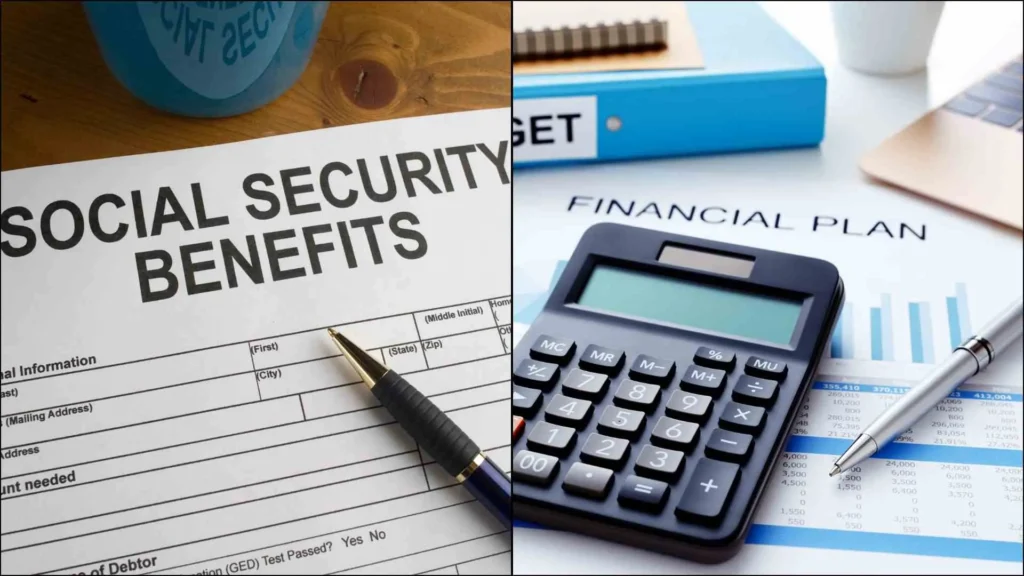The Old Age, Survivors, and Disability Insurance (OASDI) program is the official name for Social Security in the United States. The federal OASDI tax noted on your paycheck funds this program that provides benefits to retired adults and people with disabilities. Even to their spouses, dependents, and survivors.
Although this system is statutory for many in both the private and public sectors, it is far from everyone who gets to take part in it. Especially public sector workers, such as teachers. But other alternatives to pension systems exist. And it’s important that you know which benefits you can take advantage of so that your future gives you a well-deserved and secured retirement.
What Is the Old-Age, Survivors, and Disability Insurance (OASDI) Program?
This is a statutory general occupational pension scheme called the Old Age, Survivors, and Disability Program (OASDI). According to it, old-age, invalidity, and family pensions are granted. The minimum income is secured through a tax-funded social contribution, which is means-tested and means-tested. No real residence-based national pension system.
Supplementary pension insurance is arranged by the employer or based on labor market agreements. More than half of the private sector employees have supplementary pension insurance arranged by the employer.

The pensions are adjusted annually according to the change in the consumer price index.
The US pension system is mainly based on a pay-as-you-go system. The pensions are paid for by the employers, the employees, and the state together.
Historical facts:
The U.S. Social Security program (including retirement and disability income) was ushered in through the Social Security Act signed by President Franklin D. Roosevelt on Aug. 14, 1935, when the U.S. economy was in the depths of the Great Depression. The program, the U.S. population, and economy have grown massively over the decades.
The goal of the program is to partially replace income that is lost due to old age, the death of a spouse a qualifying ex-spouse or disability.
Old Age, Survivors, and Disability Insurance is the official name of the Social Security program in the U.S., though it is little used. The program benefits retired adults, people with disabilities, and their dependents. OASDI taxes, or FICA payroll tax, fund the program from workers’ wages and employer contributions.
Individuals and employers split Social Security taxes, while self-employed individuals are responsible for both. An individual’s monthly Social Security payment is based on their earnings during their working years.
Social Security recipients will receive a 3.2% increase in 2024 due to a cost-of-living adjustment. The increase in 2023 was 8.7%, a reflection of the high inflation preceding the period.
Who is entitled to the OASDI?
A person must have at least 40 insurance quarters to be entitled to a pension. A maximum of four insurance quarters can be earned per year. The US has a pension cap in use, and pensions do not accrue for the proportion that exceeds this cap.
The OASDI program provides payments to people who meet certain criteria. For old-age payments, money is paid to qualifying persons starting as early as age 62. The full retirement age depends on the individual’s birth date and is 67 for everyone born in 1960 or later.
Qualifying persons who wait until age 70, but no later, to begin collecting benefits collect higher, maximum benefits due to delayed retirement credits.
To qualify for retirement benefits, a worker must be fully insured. A worker becomes fully insured by accumulating credits, also called quarters, of coverage. Credits or quarters are accumulated based on covered wages earned for a particular period.
The maximum pension for an insured person who retires at 65, whose income during the entire working history has been at least as large as the pension ceiling.
The OASDI benefits are paid by you from the OASDI-tax systems
The OASDI Program is the federal benefits program better known as Social Security. It covers both retirement income for individuals and surviving spouses and disability income.
Workers contribute to the program through a tax levied each year on a portion of their income, at a rate of 6.2% for employees (or 12.4% for self-employed individuals).
That money is then paid out as income benefits to retired or disabled individuals at a rate adjusted regularly for inflation.
Is OASDI Tax Mandatory?
Yes, federal law requires that workers and employers contribute to the OASDI fund through Social Security taxation on income of up to $160,200 for 2023 and $168,600 in 2024.
Who Is Exempt From Paying Into Social Security?
Most workers earn benefits by paying into the Social Security system through payroll taxes.
Yet what many people don’t realize is that some workers aren’t part of Social Security. They don’t have to pay Social Security payroll taxes on their earnings during their careers, but they also can’t count on the program to provide retirement benefits. In particular, teachers and other public sector workers in 15 states nationwide get left out of Social Security in many cases.
Why and Who?
The history of this practice dates back to Social Security’s formation, when the law was intended to cover only private employees. At the time, it wasn’t clear whether the federal government could force states to pay payroll taxes. Only in the 1950s did the rules change, allowing states to join Social Security.
However, not every state participated. Now, teachers in 12 states—Alaska, California, Colorado, Connecticut, Illinois, Louisiana, Maine, Massachusetts, Missouri, Nevada, Ohio, and Texas—don’t have coverage arrangements with Social Security. In addition, three other states, Georgia, Kentucky, and Rhode Island—have varying degrees of coverage that differ by school district.
What it means for teachers
Lack of Social Security coverage doesn’t mean teachers in these states are left completely high and dry. To opt out of Social Security, states had to provide pensions that would provide benefits that were at least as good as what Social Security would provide.
Understand Your options
If you work as a teacher in one of the states listed above, it’s vital to understand the conditions under which your pension benefits will kick in. You can use those figures to run calculations and determine what impact your pension will have on any Social Security benefits you’re entitled to receive.
According to the National Association of State Retirement Administrators, about 40% of public school teachers aren’t covered by the Social Security system.
However, despite this serious drawback, there are ways for teachers to ensure they’re on track for a successful and secure retirement.
Here’s what you need to know!
Teacher retirement options vary by state, but you’re generally offered a pension or a defined contribution plan like a 403(b) or 457(b), or both.
Pensions
Pensions have plenty of perks, most notably a guaranteed benefit in retirement that lasts as long as you live. But they’re not without downsides. For example, many are underfunded and typically don’t travel well, requiring you to participate in the plan for several years before you’re vested. “Vested” means promised the full pension benefit you’ve accumulated. Generally, the longer you work, the larger your pension benefit.
To ensure your retirement is all you want it to be, it’s wise to supplement your pension. We’ll tell you two ways to do that.
A defined contribution plan
You may be eligible for a 403(b) or 457(b) plan alongside your pension. Both allow you to put aside money for retirement pretax. The annual contribution limit for 2023 is $22,500, with additional catch-up contributions in some cases. Those limits are separate if you have both a 403(b) and a 457(b).
We clarify the concepts
- Public sector and nonprofit organizations don’t offer employees 401(k) plans.
- These organizations offer other employer-sponsored plans, such as the 403(b) and 457.
- The 457(b) is offered to state and local government employees, and the 457(f) is for top nonprofit executives.
- A 403(b) plan is typically offered to employees of private nonprofits and government workers, including public school employees.
- If you are eligible for both plans, you can split your contributions between them.
You may be eligible for a 403(b) or 457(b) plan alongside your pension. Both allow you to put aside money for retirement pretax. The annual contribution limit 2023 is $22,500, with additional catch-up contributions in some cases. Those limits are separate if you have a 403(b) and a 457(b).
So which Is Better, a 403(b) or a 457(b)?
A 457(b) plan is better if you need more time to earn money for your retirement. A 403(b) plan might be better if you want more investment options.
You may also earn employer-matching contributions.
The money you contribute generally grows tax-deferred and will be taxed as income when you take retirement distributions. Both plans may offer a Roth option, allowing you to put away after-tax dollars and take retirement distributions tax-free.
As you can see, it’s not an easy game to sort out all the concepts and prepare properly for your pension. It’s important to build the best possible conditions, but it’s a jungle that’s easy to get lost in if you don’t get the right guidance. Get help from your employer to find out which solutions suit you. Then, it will be easier to talk to a financial advisor about a plan that benefits your future in the best way.
“Disclosure: This information is for educational purposes only and should not be construed as financial advice. Please consult with a qualified financial advisor before making any investment decisions.”

About Author
Bill Wallace blends his academic background in Literature with his ventures in International Business and finance. His professional journey took him across Europe, especially in Spain, where his passion for writing evolved. Since then, armed with his literary finesse and investment acumen, he has been crafting financial content for teachers worldwide. More about me.
Similar Read:





